[Text|High-tech LED Xu Chaopeng] In July this year, the news from the Guangzhou Metro Operation Center, the LED energy-saving lighting demonstration project of Metro Line 2 has been completed recently, and the LED lighting system of the public areas of 14 subway stations has been replaced. With 7527 sets, the overall illumination uniformity of the station is increased by 10% compared with that before the renovation, and the average annual electricity consumption will be as high as 2.45 million kWh.
For the all-round transformation of this LED lighting project, Guangzhou Metro also said, “Considering the better energy-saving and environmental protection effects of LED lighting, all the new lines after the first phase of Line 6 and the general lighting of the public areas of the station are designed and adopted. LED lights. In addition, among the old lines, some stations on Line 1 are currently undergoing LED light renovation, and the remaining lines will be replaced after the original lamps have expired."

LED · Energy Saving Lighting Demonstration Project of Guangzhou Metro Line 2
In the face of the rapid development of the rail transit infrastructure market in recent years (in addition to the subway industry, including railways, trams, magnetic levitation and other urban transportation hubs), their huge predictable prospects are tantamount to giving the majority of LED lighting Manufacturers bring opportunities for development. So, how big will this market be?
"New Cake" to be eaten
“With the introduction of the “Technical Specifications for LED Lamps for Lighting in Metro Placesâ€, the standardization system for rail lighting LED lighting will be improved, and the relevant supporting policy environment of the country will also be positive. LED business opportunities are compared with traditional lighting fixtures. LED has the advantages of high energy saving, green environmental protection, strong earthquake resistance and strong stability in rail transit applications. Because rail transit has high stability factor and high seismic resistance and high energy consumption, the LED is very suitable for orbit. Traffic field." Wu Feng, general manager of Spike Optoelectronics, told Gaogong LED.
Before that, let us look at a set of upcoming data: (in Guangdong Province)
1) Guangzhou Track: Guangzhou will consist of 20 urban track lines and 11 Pearl River Delta intercity rail lines. The total length of the network will be 1,164 kilometers. On the basis of the 2010 network, the 2020 line will increase the east line of Line 3. Duan (Panyu Square-Qingliu), Line 4 North-South Extension Line (Jinzhou-Information Park, Huangcun-Shuixi), Line 5 East Extension (Winchong-Huangpu Passenger Port), Line 6 East Extension (Xiangxue) - Yonghe), Line 7 (Guangzhou South Railway Station - Dasha East), Line 8 North Extension (Cultural Park - Baiyun Lake), Line 10 (Sports West - Dongsha), Line 11 (Circle), Ten Line 2 (Shantou-University City South), Line 13 (Huanggang-Xintang, East-West Express Line), No.14 and Branch Lines (Conghua Line and Knowledge City Line), Line 16 (Xintang-è”) City, Yucheng Line), Line 20 (Guangzhou South Railway Station - Weizhou, Xinke Station Contact Express) and Baietan Contact Express (Guangzhou South Railway Station - Baietan), with a total length of 677 kilometers.
2) Shenzhen Track: By 2030, it is estimated that 16 lines will be built with a total length of 585.3 kilometers. By 2040, Guangzhou's rail transit will consist of 20 urban track lines and 11 Pearl River Delta intercity rail lines. 1164Km, of which the city line is 811Km, and the intercity line (Guangzhou section) is about 350Km;
3) Other cities: Foshan orbit to 2030, planning 8 lines, totaling 318.712 km/Dongguan track will consist of 4 lines and an intercity suburban railway (Guangshen Suburban Railway) with a total length of 264.2 km/Huizhou Orbital Planning 6 lines, total length 247.5 km / Zhuhai track to 2050, will build 9 rail transit lines, including 6 intercity rail lines and 3 urban rail lines, the entire rail transit network will reach 233.8 km / Zhongshan track It is planned to build six urban orbits by 2050 with a total length of about 153.08 kilometers;
In addition, major high-speed rail projects in the Pearl River Delta: Inter-Shenzhen Intercontinental Orbit, Shenzhen-Hong Kong East Passage, Hong Kong-Zhuhai-Macao Bridge, Guangzhou-Zhuhai Intercity, Guangwan-Shenzhen Intercity, Guangfozhu Intercity, Guangshenyu Intercity, Guangfo Huanhuan, Foshan, Dongguang, Guanghui Intercity (Guangzhou-Qingyuan, Zhongshan-Humen, Dongguan-Huizhou, Zhaoqing-Nansha, Shenzhen-Huizhou, Zhuhai-Shenzhen, Jiangmen-Enping, Zhuhai-Doosan, Humen-Yantian, Shenzhen-Maoming Line), inter-provincial railway connection: Guangzhou-Shenzhen-Hong Kong Passenger Dedicated Line, Xiamen-Shenzhen Railway, Guizhou-Guangzhou Railway, Nanguang Railway, Wuhan-Guangzhou High-speed Railway, coastal high-speed and other projects will also be given to the LED lighting industry in Guangdong Province. External inline brings great opportunities for development.
The above list may be only a part of it. In fact, the project is far from this, as well as railways, trams, magnetic levitation and so on. At present, in addition to ten cities such as Shenzhen, Guangzhou and Beijing, which operate rail transit, more than 40 cities are under construction or planning to build urban rail transit facilities such as subways and light rails.
"LED lighting has great potential for application in urban rail transit and has broad development prospects. It is a new blue ocean for LED market segments. As an important window for urban image display, rail transit is also the best image promotion and brand influence of LED manufacturers. Excellent platform." According to a spokesperson for Wanrun Technology.
In fact, since the beginning of this year, many LED companies including Spike Optoelectronics, Wanrun Technology, and Shanghai Sansi have also put rail transit lighting on the company agenda, and Spike Optoelectronics has won the bid for Shenzhen Metro Phase III Project 7 Line LED comprehensive energy-saving lighting project, and Shenzhen Metro reached a comprehensive strategic partnership, Wanrun Technology also signed a "Strategic Cooperation Agreement" with Changchun Railway Passenger Equipment Co., Ltd. (referred to as "long passenger equipment") in Changchun City.
LED "expansion" is an urgent task
"At the end of this year, the total mileage of railway operations in the country will reach 120,000 kilometers, and it is estimated that by 2020, 177 rail transit lines will be built in China, and the total length will reach 6,100 kilometers." Gaogong Research Institute LED Research Institute (GGII) Senior Analyst Li Shengfa said.
According to GGII survey data, by the end of 2014, the length of urban rail transit lines in 22 cities nationwide was 3,173 kilometers, of which 2,365 kilometers were subways, accounting for 75%; light rails were 239 kilometers, 8%; single tracks were 89 kilometers, occupying 3 %; modern trams 141 km, occupying 4%; maglev traffic 30 km, 1% share; city fast track 308 km, accounting for 10%, China is potential to become the world's largest and fastest growing rail transit construction market .
.jpg)
Rapid expansion of track lighting new blue sea
"The current types of lighting used in urban rail transit construction include fluorescent lamps, metal halide lamps and high-pressure sodium lamps. The lamps have a wide variety of lamps and power, which is not convenient for procurement and maintenance, and cannot be energy-saving and environmentally friendly." Seniors in the lighting industry revealed to Gaogong LED.
It is reported that such traditional lighting fixtures generally have the following problems: First, there are many bare light sources, and glare is harmful; second, the illumination is low, there is a difference between the stations, and the illumination uniformity is not enough; third, the effective luminous flux of the lamps The proportion is small; fourthly, most of the lighting fixtures used are non-efficient energy-saving products, which consume a lot of energy and have extremely high operating costs.
“As the hub of the city, rail transit consumes about 13% of the total electricity consumption of the rail system. At present, the average energy consumption of rail lighting in China is 26W/m2, which is much higher than the national standard (lighting standard 200lx, The energy consumption value is controlled below 6W/m2.) The veteran said that the energy consumption of rail transit lighting is becoming more and more prominent, and the requirements for lighting and power saving are getting higher and higher. Therefore, the comprehensive transformation of LED lighting engineering cannot be delayed.
“Before 2009, the development of the rail transit market was in the market's “quiet periodâ€, and its mileage growth was slow. The entire equipment supply market showed a state of “not stunnedâ€, but in recent years, the decentralization of administrative examination and approval and the opening of private investment Under the release of the approval of the new construction planning line, the domestic urban rail transit will present a new round of infrastructure construction in the next stage.†Li Shengfa mentioned.
GGII expects that by the end of 2020, the total length of urban rail transit planning in China will exceed 6,000 kilometers (excluding railcars and city rails). After deducting the operating lines that have been opened, the average annual operating mileage will be around 900 kilometers. The number of cities with traffic will reach 40 or so, and the amount of investment in rail transit will reach 3-4 trillion yuan.
“In short, from the perspective of the industrial chain, the urban rail transit infrastructure industry is booming, and the design and application of rail transit lighting products will be very effective. From the perspective of the growth rate of rail transit lines and stations, the relevant market demand in the future. The growth will also be a geometric growth, the distribution of lighting applications for various projects, including tunnel lights, street lights, downlights, spotlights, etc., companies in related fields will have much to offer." The veteran finally mentioned.

Flexible PCB , allowing the board to conform to a desired shape, or to flex during its use.
If you need a manufacturer who can manufacture flexible PCB for you, you should make it clear that this PCB manufacturer should have a mature and current process flow for manufacturing flexible circuit board. Considering factors such as manufacturing cost, we suggest that you choose a Chinese PCB manufacturer. Because, at present, PCB Manufacturing industry is basically concentrated in China. It is not only because China's manufacturing industry is very developed, but also because it has a very mature production process and can effectively reduce the cost of manufacturing products for you.

WHAT IS FLEXIBLE PCB?
Flexible PCB, also known as Flexible electronics, flexible circuit board, Flex PCB , flex circuits, is a technology for assembling electronic circuits by mounting electronic devices on flexible plastic substrates, such as polyimide, PEEK or transparent conductive polyester film. Additionally, flex circuits can be screen printed silver circuits on polyester. Flexible electronic assemblies may be manufactured using identical components used for rigid printed circuit boards, allowing the board to conform to a desired shape, or to flex during its use. An alternative approach to flexible electronics suggests various etching techniques to thin down the traditional silicon substrate to few tens of micrometers to gain reasonable flexibility, referred to as flexible silicon (~ 5 mm bending radius).
Flexible circuit boards are widely used in automobiles, medical, telecommunications, industry or commerce.
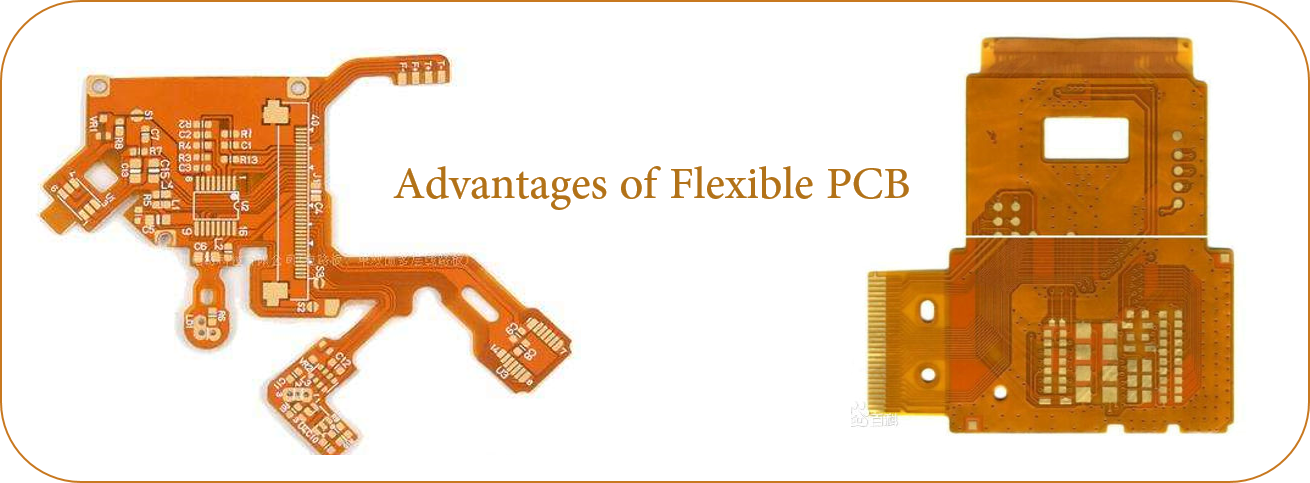
What are Advantages of Flexible PCB?
Flexible PCB is essentially different from Rigid PCB . Although rigid PCB is currently the most produced PCB in the world, the use of flexible PCB has many advantages, including:
- Save space and weight. Flexible PCB design requires only about 10% of the space and weight of common PCB components to provide greater freedom of installation and packaging. The inherent flexibility also allows for more compact flexibility. Because of its lighter weight, it also reduces transportation costs.
- Increased stability and reliability. A Flexible Printed Circuit Board requires fewer interconnects, which in turn requires fewer contact crimps, connectors and solder joints. Simply put, a flexible PCB Board does not contain as many potential sources for failure, which enhances their reliability.
- Compatibility and other superior performance. Flexible Printed Circuit boards can be compatible with almost any type of connectors or components, and can be used with ZIP connectors and other components, so the compatibility of flexible Printed Circuit Boards is incomparable with other PCBs. They also perform well at extreme temperatures and exhibit excellent radiation and chemical resistance.
- Effective Cost Control. Cost-saving advantages of flexible PCB include reducing material and packaging requirements, reducing component replacement costs and possibly leading to assembly errors requiring maintenance.
- Reduced wiring errors
- Elimination of mechanical connectors
- Unparalleled design flexibility
- Higher circuit density
- More robust operating temperature range
- Stronger signal quality
- Improved reliability and impedance control
These benefits make flex PCBs ideally fit for a wide range of applications in industries such as Military, Transportation, Medical, Consumer Electronics, Automotive, Aerospace, Communications and Industrial.
Flex PCB disadvantages also exist:
- Material costs are higher than rigid or Rigid Flex PCB , and overall manufacturing costs are higher.
- At low temperature, the performance of flexible circuit boards can not be compared with other PCBs.
- Making the assembly process more difficult and complex
- Easily damaged through improper handling (easy to bend and dent)
- If scratch occurs, it is easy to damage.
- Difficult or impossible to repair once damaged
- Storage conditions are more stringent than general circuit boards. Sulfur-free plastic packaging should be considered.
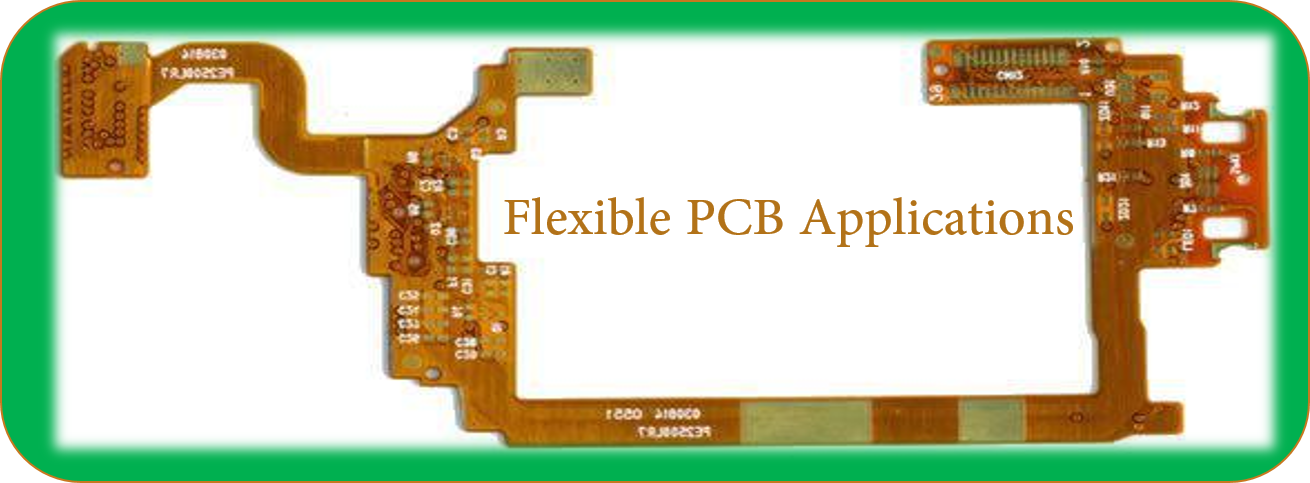
Flexible PCB Applications
- Flexible Circuits are usually used as connectors in various applications, because they have incomparable flexibility, save space and are easier to maintain than rigid circuit boards in the later period. Flexible circuits are commonly used in computer keyboards; most keyboards use flexible circuits as switching matrices.
- Glass is used as a substrate in LCD manufacturing. If a thin flexible plastic or metal foil is used as the substrate, the whole system can be flexible, because the film deposited on the top of the substrate is usually very thin, about a few microns.
- Organic light-emitting diodes (OLED) are usually used instead of backlights for flexible displays, thus making flexible organic light-emitting diode displays.
- Most flexible circuits are passive wiring structures that are used to interconnect electronic components such as integrated circuits, resistors, capacitors and the like; however, some are used only for making interconnections between other electronic assemblies either directly or by means of connectors.
- In the automotive field, flexible circuit boards are used for dashboards, under-hood control devices, circuits hidden in cab roofs, and ABS systems. In computer peripherals, a flexible PCB is used on the printer's mobile print head and the signal is connected to the mobile arm carrying the read/write head of the disk drive. Consumer electronic devices use flexible circuits in cameras, personal entertainment devices, calculators or motion monitors.
- Flexible circuits are found in industrial and medical devices where many interconnections are required in a compact package. Cellular telephones are another widespread example of flexible circuits.
- Flexible solar cells have been developed for powering satellites. These cells are lightweight, can be rolled up for launch, and are easily deployable, making them a good match for the application. They can also be sewn into backpacks or outerwear.

Types of Flexible PCB
There are a few basic constructions of flexible circuits but there is significant variation between the different types in terms of their construction. Following is a review of the most common types of flexible circuit constructions
-
Single sided Flexible PCB
Single-sided flexible circuits have a single conductor layer made of either a metal or conductive (metal filled) polymer on a flexible dielectric film. Component termination features are accessible only from one side. Holes may be formed in the base film to allow component leads to pass through for interconnection, normally by soldering. Single sided flex circuits can be fabricated with or without such protective coatings as cover layers or cover coats, however the use of a protective coating over circuits is the most common practice. The development of surface mounted devices on sputtered conductive films has enabled the production of transparent LED Films, which is used in LED Glass but also in flexible automotive lighting composites.
-
Double access or back bared Flexible PCB
Double access flex, also known as back bared flex, are flexible circuits having a single conductor layer but which is processed so as to allow access to selected features of the conductor pattern from both sides. While this type of circuit has certain benefits, the specialized processing requirements for accessing the features limits its use.
-
Sculptured Flexible PCB
Sculptured flex circuits are a novel subset of normal flexible circuit structures. The manufacturing process involves a special flex circuit multi-step etching method which yields a flexible circuit having finished copper conductors wherein the thickness of the conductor differs at various places along their length. (i.e., the conductors are thin in flexible areas and thick at interconnection points.).
-
Double sided Flexible PCB
Double-sided flex circuits are flex circuits having two conductor layers. These flex circuits can be fabricated with or without plated through holes, though the plated through hole variation is much more common. When constructed without plated through holes and connection features are accessed from one side only, the circuit is defined as a "Type V (5)" according to military specifications. It is not a common practice but it is an option. Because of the plated through hole, terminations for electronic components are provided for on both sides of the circuit, thus allowing components to be placed on either side. Depending on design requirements, double-sided flex circuits can be fabricated with protective coverlayers on one, both or neither side of the completed circuit but are most commonly produced with the protective layer on both sides. One major advantage of this type of substrate is that it allows crossover connections to be made very easy. Many single sided circuits are built on a double sided substrate just because they have one of two crossover connections. An example of this use is the circuit connecting a mousepad to the motherboard of a laptop. All connections on that circuit are located on only one side of the substrate, except a very small crossover connection which uses the second side of the substrate.
-
Multilayer Flexible PCB
Flex circuits having three or more layers of conductors are known as multilayer flex circuits. Commonly the layers are interconnected by means of plated through holes, though this is not a requirement of the definition for it is possible to provide openings to access lower circuit level features. The layers of the multilayer flex circuit may or may not be continuously laminated together throughout the construction with the obvious exception of the areas occupied by plated through-holes. The practice of discontinuous lamination is common in cases where maximum flexibility is required. This is accomplished by leaving unbonded the areas where flexing or bending is to occur.
-
Rigid flex PCB
Rigid flex PCB circuits are a hybrid construction flex circuit consisting of rigid and flexible substrates which are laminated together into a single structure. Rigid-flex circuits should not be confused with rigidized flex constructions, which are simply flex circuits to which a stiffener is attached to support the weight of the electronic components locally. A rigidized or stiffened flex circuit can have one or more conductor layers. Thus while the two terms may sound similar, they represent products that are quite different.The layers of a rigid flex are also normally electrically interconnected by means of plated through holes. Over the years, rigid-flex circuits have enjoyed tremendous popularity among military product designer, however the technology has found increased use in commercial products. While often considered a specialty product for low volume applications because of the challenges, an impressive effort to use the technology was made by Compaq computer in the production of boards for a laptop computer in the 1990s. While the computer's main rigid-flex PCBA did not flex during use, subsequent designs by Compaq utilized rigid-flex circuits for the hinged display cable, passing 10s of 1000s of flexures during testing. By 2013, the use of rigid-flex circuits in consumer laptop computers is now common.
Rigid flex PCB board are normally multilayer structures; however, two metal layer constructions are sometimes used.
-
Polymer thick film flexible PCB
Polymer thick film (PTF) flex circuits are true printed circuits in that the conductors are actually printed onto a polymer base film. They are typically single conductor layer structures, however two or more metal layers can be printed sequentially with insulating layers printed between printed conductor layers, or on both sides. While lower in conductor conductivity and thus not suitable for all applications, PTF circuits have successfully served in a wide range of low-power applications at slightly higher voltages. Keyboards are a common application, however, there are a wide range of potential applications for this cost-effective approach to flex circuit manufacture.
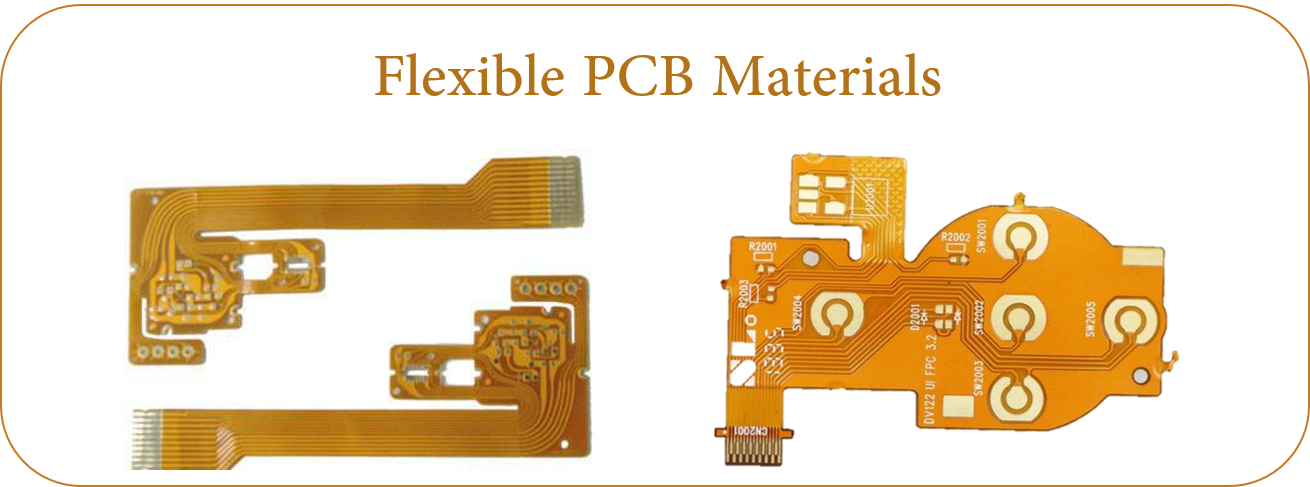
Flexible PCB materials
Each element of the flex circuit construction must be able to consistently meet the demands placed upon it for the life of the product. In addition, the material must work reliably in concert with the other elements of the flexible circuit construction to assure ease of manufacture and reliability. Following are brief descriptions of the basic elements of flex circuit construction and their functions.
- Base material
- Bonding adhesive
- Metal foil
In certain non standard cases, the circuit manufacturer may be called upon to create a specialty laminate by using a specified alternative metal foil, such as a special copper alloy or other metal foil in the construction. This is accomplished by laminating the foil to a base film with or without an adhesive depending on the nature and properties of the base film.
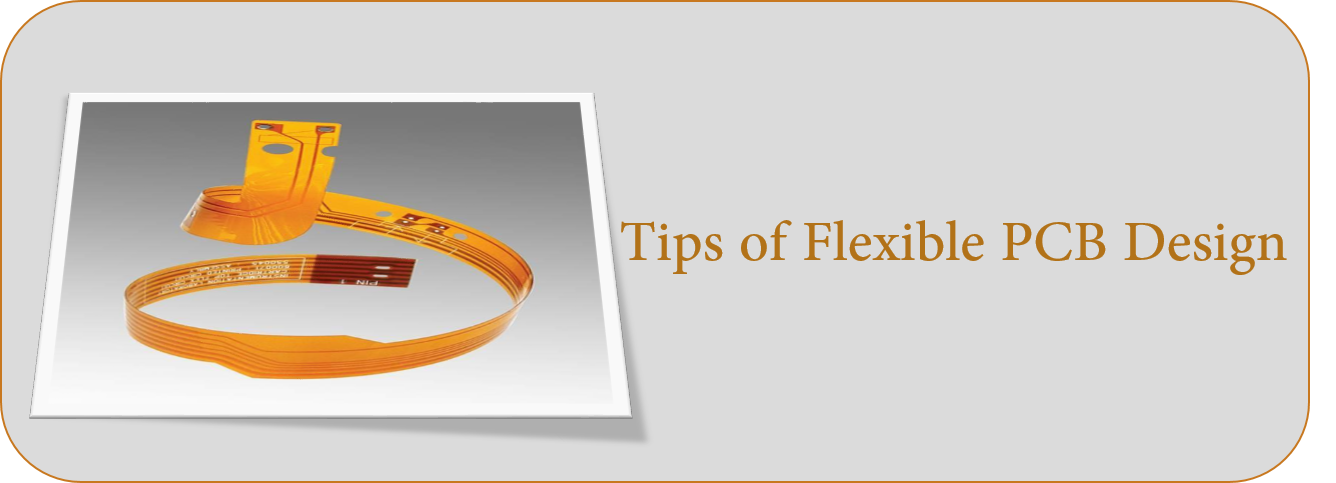
Tips of flexible PCB design
The shortest distance between two points is a straight line, so a circuit trace is a circuit trace on a flexcircuit will look like a circuit trace on a Rigid Circuit Board , right? Actually there can be considerable differences between designing a rigid PCB and a flexible PCB. Because of the flexibility feature, there are unique issues affecting robustness. For example, since flex can bend, one needs to be sure that bending does not crack or break solders joints near a bend location. For this reason, design features like radiused corners and filleted pads are common on flexible circuits. Another issue is the substrate used for flex is not as dimensionally stable vs. the hardboard cousin. Allowances for dimensional changes may be required for flexible PCB design. Most PCB design software is tailored to rigid printed circuit materials and features. Tradeoffs occur when this same software is used to design flexible PCB's.
tools
Both PCBs and flexible PCBs use similar tooling such as CAD files, photo tools and electrical test fixtures. Perhaps the biggest difference is around the cutline definition. Flexible circuits provide unlimited configuration opportunities that often results in very odd shapes and sizes. Circuit boards often are rectangular or may have some notches or curved outlines routered. Because of this nuance, steel rule dies and hard tool dies are probably used more often for flexible PCBs than for boards, at least for ultra high volume applications. Laser definition of the circuit outline is also a common flexcircuit process. Other differences in tooling involve fixturing that may be required to handle flexible substrates.
JHYPCB: A Leading Flexible PCB Manufacturer from China
At JHYPCB, we specialize in the fabrication and assembly of flexible PCB products for use in the manufacturing of medical devices and various types of telecommunication and industrial equipment. Our Custom PCB manufacturing capabilities allow us to develop and produce a top-performing flex PCB that meets your unique requirements. We can also work with you to produce a custom flex PCB Prototype that will significantly improve your prospects of a successful project outcome. For detailed capabilities, please refer to the following form.
| Items | Manufacturing Capability | |
| PCB Layers | 1 - 8layers | |
| Laminate | DuPont PI, Shengyi PI | |
| Maximum PCB Size(Length x Width) | Single Sided PCB | 480*4000mm |
| Double Sided PCB | 480*1800mm | |
| Multilayers | 236*600mm | |
| Minimum Board Thickness | Single Sided PCB | 0.05mm+/-0.02mm |
| Double Sided PCB | 0.08mm+/-0.02mm | |
| Multilayers | As per Gerber | |
| Finished Board Thickness | 1-6L | 0.05mm-0.6mm |
| 8L | 1.6mm | |
| Min Tracing/Spacing | Copper Thickness 1/3 oz: | 0.076mm/0.076mm (1-6L) |
| 0.05mm/0.05mm (8L) | ||
| Copper Thickness 1/2 oz: | 0.076mm/0.076mm (1-6L) | |
| 0.06mm/0.06mm (8L) | ||
| Copper Thickness 1oz: | 0.1mm/0.1mm (1-6L) | |
| 0.065mm/0.065mm (8L) | ||
| Min. Annular Ring | 4mil | |
| Minimum Hole Size | 1-6L | 0.2mm(8mil) (CNC) |
| 8L | 0.15mm(CNC) | |
| Solder Mask Color | Green, White, Blue, Black, Red, Yellow | |
| Solder-stop coating---Coverlay | PI and PET film |
|
| Silkscreen Color | White, Black, Yellow |
|
| Surface Finish | OSP | |
| e HASL | ||
| ENIG(Electroless NickLead-Free Gold) | Ni thickness:2-6um | |
| Au thickness:0.025-0.05um | ||
| Flash Gold | Ni thickness:2-8um | |
| Au thickness:0.025-0.15um | ||
| Immersion Tin | Tin thickness:0.5-1um | |
| PlatingTin | Tin thickness:1-10um | |
| Laser cuPunching | ||
| Special technologies | Peelable solder mask | |
| Gold fingers | ||
| Stiffener (only for PI/FR4 substrate) | ||
| Impedance Control+/-10% | ||
| Rigid Flex PCB | ||
YOU MAY ASK:
-
How are flexible circuits made?
Single-sided flexible circuits have a single conductor layer made of either a metal or conductive (metal filled) polymer on a flexible dielectric film. ... Holes may be formed in the base film to allow component leads to pass through for interconnection, normally by soldering.
-
What is a rigid flex PCB?
Rigid flex printed circuit boards are boards using a combination of flexible and rigid board technologies in an application. Most rigid flex boards consist of multiple layers of flexible circuit substrates attached to one or more rigid boards externally and/or internally, depending upon the design of the application.
-
Who invented flexible electronics?
Paul Eisler
Some historical information about flexible circuitry. Paul Eisler is generally credited as being the inventor of the Printed Circuit Board. Paul Eisler was an Austrian inventor, born in Vienna in 1907. In 1936 Paul Eisler invented the process of using conductive epoxy to create circuit patterns.
-
What is a thin film circuit board?
A thin film circuit board as a set forth in claim 4, wherein the insulator layer comprises a polyimide obtained from biphenyltetracarboxylic dianhydride and phenylenediamine.
-
What is the meaning of flex board?
The flex banner are basically used to shout your messages or product endorsement from the rooftops or the roadsides. ... The flex banner is printed using solvent in and therefore these banners are really cost effective medium of promoting.
Helpful Resources
- Double Sided Flexible PCB
- Flexible PCB Manufacturing Capability
- Flexible PCB and Flex Circuits
- Rigid PCB vs. Flexible PCB:How to choose?
- 8 Layer Flexible PCB Circuit Board manufacturing
- Using aluminium in flexible Circuits Board

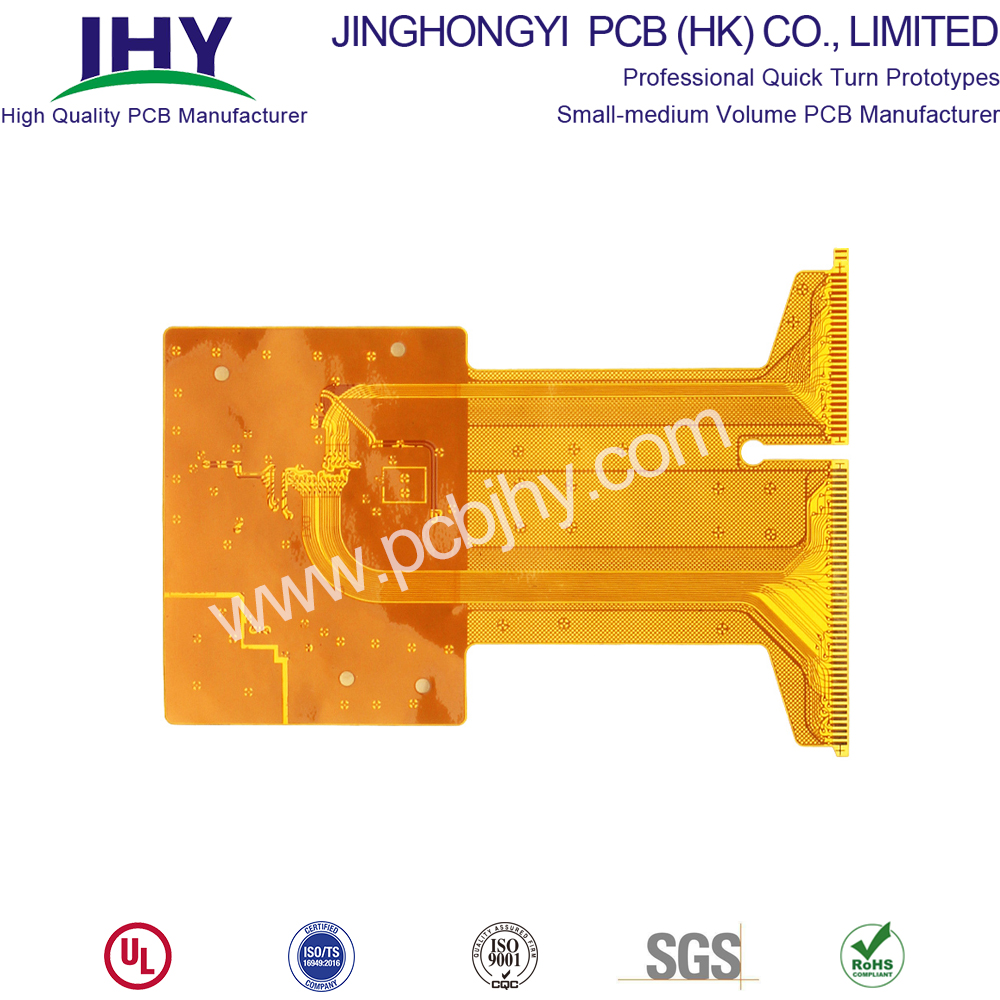
Flexible PCB
Flex PCB,Flexible Printed Circuit,Flexi Circuits,Flexible Circuits
JingHongYi PCB (HK) Co., Limited , https://www.pcbjhy.com